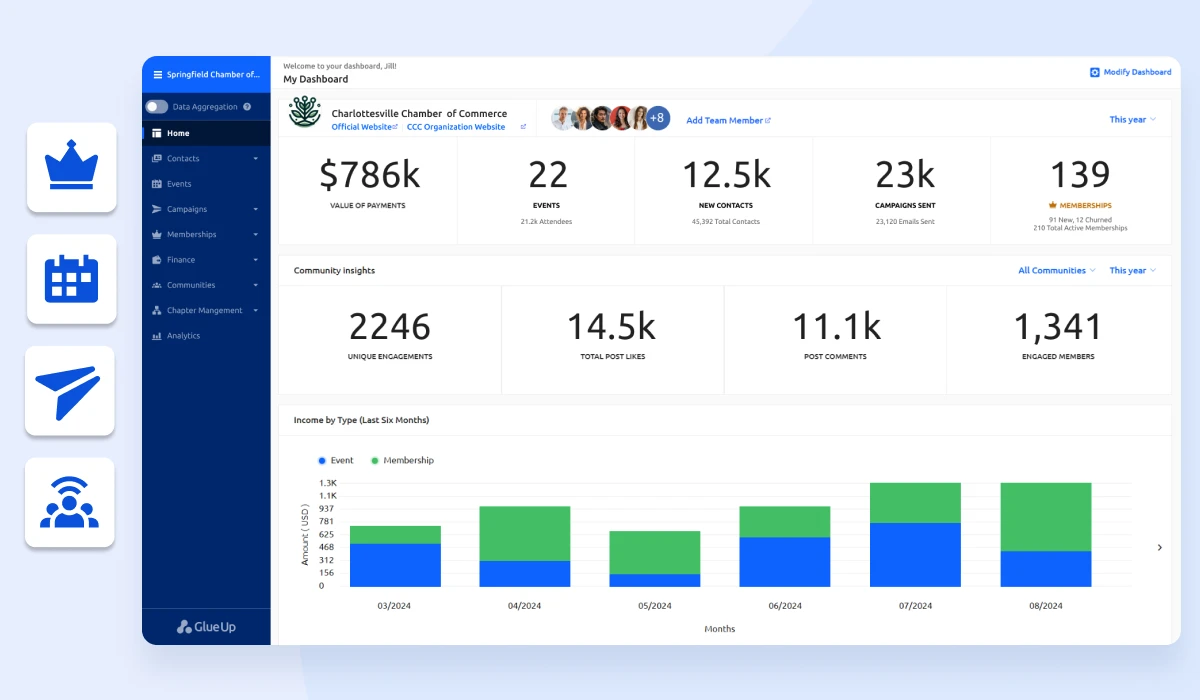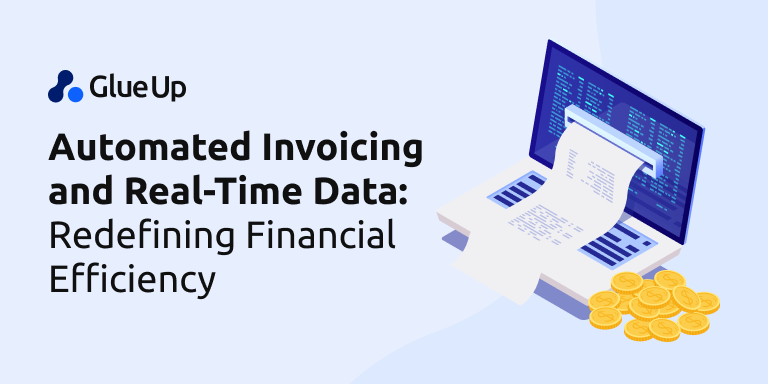
A poorly maintained database leads to challenges such as outdated or inaccurate data, increased errors, and inconsistencies, all of which restrict organizational growth and efficiency. This chaos can frustrate both employees and members, and compliance risks may arise from failing to meet data management and protection regulatory requirements.
Organizations implement various solutions to address these issues, and maintaining a database is one such approach. Effective database management involves regular updates, accurate data entry, and consistent monitoring. Yet, navigating these requirements can be complex, especially when dealing with large volumes of data or integrating multiple systems.
In this blog, we’ll explore strategies to maintain a high-performing database that supports your organization's goals and keeps operations running smoothly, helping you avoid common issues. Read on to discover actionable insights and practical tips that can refine your database management practices and drive organizational success.
Key Takeaways
- Outdated or inaccurate data, increased errors, and compliance risks can significantly hinder organizational growth and efficiency.
- Implementing strategies such as regular data backups, optimization techniques, and robust security measures is essential for maintaining a high-performing database.
- Regular performance monitoring, reviews, and timely upgrades are crucial for keeping your database efficient and responsive.
- Providing comprehensive training and supporting ongoing learning helps ensure your team is equipped to manage the database effectively.
- Glue Up enhances database maintenance through centralized data management, automated backups, advanced security, real-time performance monitoring, and scalable solutions.
Analyzing Your Organization's Database Requirements

Understanding your organization's database requirements is the first step toward effective database management. This involves a thorough analysis of the types of data you handle, how that data is used, and the performance needs of your membership database.
Clearly defining these aspects helps you set the foundation for a database system that supports your organizational goals and operational efficiency.
Identifying Data Types and Sources
Identifying the types of data your organization handles is really beneficial for proficient database management. This includes categorizing data into types such as member details, transaction records, and operational metrics.
Equally important is mapping out data sources, whether they come from internal systems, third-party applications, or user inputs. Knowing where your data originates and how it is used helps you design a comprehensive and organized database structure.
Assessing Data Usage and Performance Needs
Once you understand your data types and sources, the next step is to assess how this data is used and the performance requirements of your database. Consider factors like the volume of data, how often it is accessed or updated, and the complexity of the queries run against it.
This assessment helps determine the right database architecture and performance capabilities needed to handle current demands and scale as your organization grows. Proper assessment confirms that your database remains efficient and responsive.
Implementing Effective Database Management Practices
Impactful database management practices, such as strategies for data backup, optimization, and security, are important for maintaining a high-performing database that meets your organization's needs.
The following practices guarantee that your database operates smoothly and reliably:
Data Backup Strategies
Data backup is a fundamental practice to safeguard against data loss due to system failures or other disruptions. Developing a comprehensive backup strategy involves scheduling regular backups and choosing between on-site and off-site storage solutions.
Automated backup systems can help reduce manual errors and ensure consistency. Stats show that in 2023, 35% of businesses facing data disruptions could not recover their lost data due to a lack of backups, malware-related corruption, and gaps between backup intervals.
This highlights the need for periodically testing backups to confirm their integrity and restore capabilities for effective data recovery.
Database Optimization Techniques
Database optimization is key to boosting performance and validating that your database operates productively. Techniques such as indexing improve data retrieval times by creating pointers to data locations, while query optimization refines how queries are executed to reduce processing time.
Regular maintenance tasks, such as defragmenting data and updating statistics, contribute to overall performance improvements. Implementing these techniques verifies that your database remains fast and reliable, even as data volumes grow.
Ensuring Data Security
Ensuring data security is critical to protecting your organization’s information from unauthorized access and potential breaches. Implementing encryption methods safeguards data both at rest and in transit, while access controls and user permissions restrict data access to authorized individuals only.
Following a 72% increase in data breaches since 2021, strengthening security measures is essential to guard against emerging threats and safeguard sensitive information. Regular security audits and vulnerability assessments help identify and address potential risks.
Prioritizing data security helps maintain confidentiality, integrity, and compliance with regulatory requirements.
Monitoring and Improving Database Performance

Ongoing monitoring and improvement of database performance are essential for validating that your database continues to meet organizational needs efficiently. Regular performance checks and proactive enhancements help maintain optimal speed and reliability, preventing potential issues before they impact operations.
You can achieve this in the following ways:
Performance Metrics and Monitoring Tools
To effectively monitor database performance, it’s important to track key performance indicators such as query response times, transaction throughput, and resource utilization (e.g., CPU, memory, and disk I/O). Monitoring tools, such as database performance management systems, help visualize these metrics and identify performance bottlenecks.
Tools like New Relic, Datadog, or native database monitoring features provide real-time insights and alerts, allowing you to address performance issues promptly.
Conducting Regular Reviews and Maintenance
Regular reviews and maintenance are necessary to keep your database in peak condition. Scheduled reviews involve analyzing performance data, assessing system health, and reviewing configurations to verify they align with current usage patterns.
Routine maintenance tasks, such as updating database software, applying patches, and cleaning up obsolete data, contribute to overall stability and performance. This proactive approach helps prevent degradation and certifies smooth database operations.
Upgrading and Scaling
As your organization grows, upgrading and scaling your database may become necessary to handle increased loads and data volumes. Upgrading involves applying software updates or migrating to more advanced database systems to leverage new features and improvements.
Scaling, whether vertical (adding resources to the existing server) or horizontal (adding more servers to distribute the load), secures your database infrastructure's ability to support higher demands. Strategic planning and execution of these upgrades and scaling efforts help maintain performance and accommodate future growth.
Training and Supporting Your Team
Impactful database management requires a knowledgeable and well-supported team. Providing training and ongoing support equips your team with the skills and resources needed to manage and maintain the database effectively. Investing in your team's development contributes to smoother operations and better performance management.
Here’s how you can achieve this:
Providing Training on Database Management
Offering database management training helps your team understand best practices, operational procedures, and troubleshooting techniques. Training programs can cover topics such as database design principles, query optimization, and data security.
Regular workshops, online courses, and hands-on training sessions confirm that team members stay updated with the latest tools and technologies, boosting their ability to manage the database successfully.
In fact, 74% of workers are willing to learn new skills or retrain to remain employable, highlighting the importance of providing continuous learning opportunities to guarantee your team's competence and adaptability.
Supporting Ongoing Learning and Development
Supporting ongoing learning and development is useful for keeping your team up-to-date with evolving database technologies and practices. According to reports, 87% of millennials believe learning and development in the workplace is important.
Encourage participation in professional development opportunities, such as conferences, webinars, and certification programs, to help your team stay current and motivated.
Providing access to resources like industry publications and online communities inspires continuous learning. Moreover, supporting your team's growth allows you to validate they remain proficient and capable of handling complex database challenges.
Future-Proofing Your Database Management
Future-proofing your database management guarantees that your database system remains effective and relevant as technology and organizational needs evolve.
Therefore, by planning for growth and adapting to changing needs, you can safeguard your database against obsolescence and maintain its performance and relevance over time.
Planning for Growth and Technological Advancements

Future-proofing involves anticipating future growth and technological changes. Begin by assessing your organization’s long-term goals and estimating future data volumes, transaction loads, and user demands.
Consider emerging technologies such as cloud databases, artificial intelligence, and advanced analytics that could enhance your database capabilities.
Plan for scalable solutions, such as cloud-based storage or distributed databases, and integrate new technologies as they become available. This will certify that your database infrastructure can accommodate growth and capitalize on advancements without significant disruptions.
Adapting to Changing Needs
Adapting to changing needs requires flexibility and proactive management. Regularly review your database’s performance, usage patterns, and evolving organizational requirements. Stay informed about industry trends and technological innovations that could impact your database strategy.
Implementing modular and adaptable database solutions allows you to make incremental changes and updates as needed. Being agile and responsive to new requirements and technologies ensures that your database remains aligned with organizational objectives and can efficiently support evolving business processes.
Optimizing Database Maintenance with Glue Up

Maintaining a well-organized and up-to-date database is fundamental for associations to manage their operations effectively. Tools like association management solutions, such as Glue Up, play a vital role in this process. Glue Up provides a complete suite of features designed to streamline and improve database management.
Let’s explore what these features are:
Centralized Data Management
Glue Up provides a unified platform where all member and event data is consolidated, reducing the risk of inconsistencies and errors. Moreover, centralizing your data authorizes you to confirm that all information is accurate, up-to-date, and easily accessible, streamlining your data management efforts.
Advanced-Data Security
Glue Up prioritizes data security with robust measures to protect sensitive information. Features like role-based access control, encryption, SSL protection, GDPR compliance, and PCI DSS certification help safeguard your data from unauthorized access and compliance risks, making sure that your database remains secure and meets regulatory standards.
Real-Time Performance Monitoring
The platform offers tools for real-time insights and analytics, allowing you to track database health and identify potential issues before they become problems. This proactive approach helps maintain optimal performance and avoid disruptions.
Enhanced User Training and Support
Glue Up provides extensive training resources and ongoing support to help your team effectively manage the database. Equipping your staff with the right knowledge and tools lets you improve database management and streamline operations.
Glue Up offers several features to support your training programs and elevate your association's education efforts:
- Transform Your Training Programs: Automate repetitive tasks to focus on expanding courses and engaging attendees.
- Understand Your Performance: Track engagement history and access CPD reporting information to measure effectiveness.
- Glue Up CRM: Utilize a customizable dashboard to manage your training data and insights.
Streamlined Data Integration
Glue Up integrates seamlessly with your existing tools and systems, enabling smooth data exchanges and eliminating manual data entry. Connect your daily tools or create custom integrations with our powerful API to streamline workflows and enhance data accuracy.
Leverage Glue Up's capabilities:
- Powerful API: Build custom solutions with detailed documentation and tech support or integrate with other systems to optimize workflows.
- Widgets: Automatically display Glue Up data with event, membership, subscription, and login widgets.
Glue Up’s advanced features allow associations to optimize database maintenance practices, tackle common challenges, and confidently support operational goals. Book a demo to find out how Glue Up can improve your database management and boost organizational efficiency.



